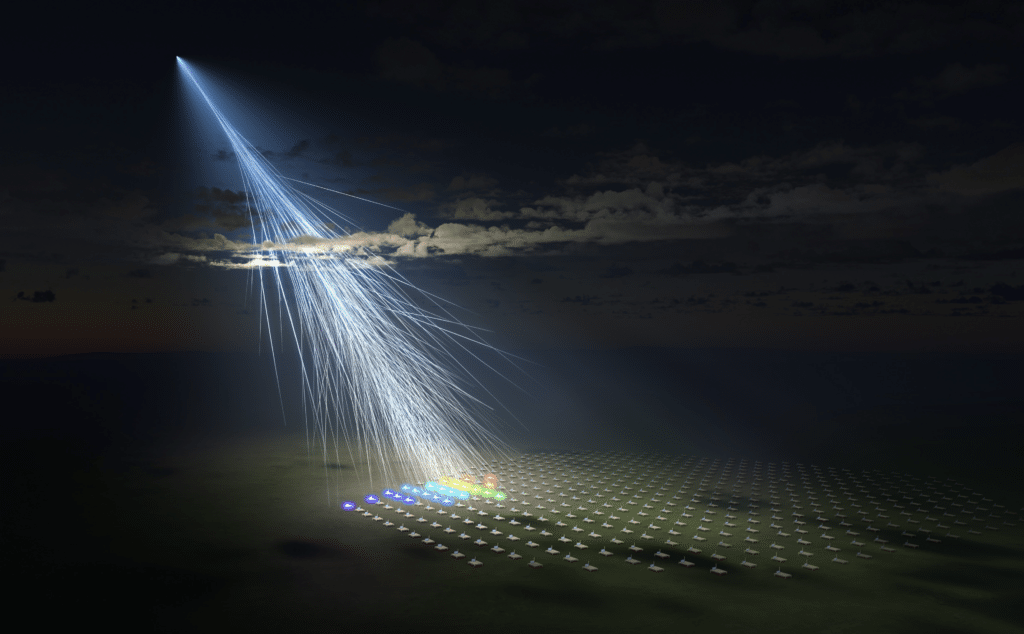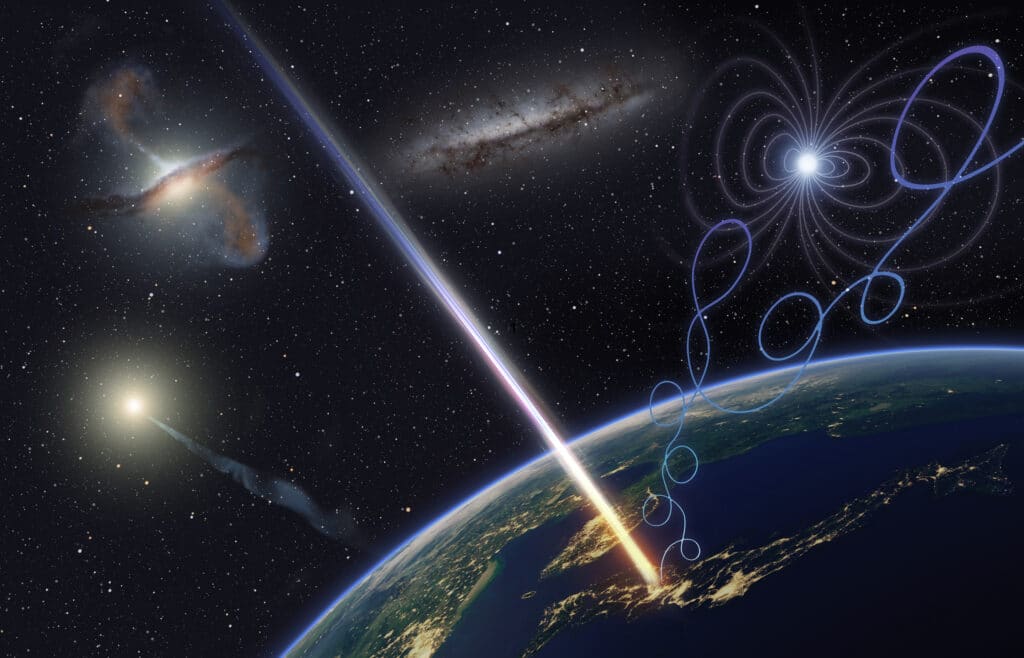In the quest to understand the cosmos, scientists have stumbled upon a baffling enigma: cosmic rays of unimaginable energy, challenging the very limits of physics as we know it. The story begins in 1991, with the University of Utah’s Fly’s Eye experiment, which detected the highest-energy cosmic ray ever observed, later named the “Oh-My-God particle.” This discovery was so startling that it left astrophysicists in shock, as the particle possessed more energy than any known source in our galaxy could produce. Even more stunning, the OMG particle exceeded the theoretical limit for cosmic rays from other galaxies.
Fast forward to May 2021, and the Telescope Array experiment, a collaboration between the University of Utah and the University of Tokyo, detected another extreme-energy cosmic ray. This particle, with an energy of 2.4 x 10^20 electron volts (eV), is as powerful as the energy released when dropping a brick on your toe from waist height. The Telescope Array, spanning 700 square kilometers in Utah’s West Desert, was triggered by this cosmic ray, pointing towards the Local Void, an empty region of space, as its possible origin.
The 2021 cosmic ray boasts the second-highest energy ever recorded. Scientists have dubbed it the Amaterasu particle, named after a Japanese sun goddess.
John Matthews, co-spokesperson at the Telescope Array, expresses the mystery behind these extraordinary cosmic rays. “The particles are so high energy, they shouldn’t be affected by galactic and extra-galactic magnetic fields,” he says in a statement. “You should be able to point to where they come from in the sky. But in the case of the Oh-My-God particle and this new particle, you trace its trajectory to its source and there’s nothing high energy enough to have produced it. That’s the mystery of this—what the heck is going on?”

Cosmic Rays: Natural Particle Accelerators
To understand this mystery, one must grasp what cosmic rays are. They are subatomic particles—protons, electrons, or atomic nuclei—stripped away by violent celestial events and hurled through the universe at nearly the speed of light. When these rays hit Earth’s atmosphere, they create a shower of billions of secondary particles, detectable by vast arrays like the Telescope Array.
The challenge lies in tracing these cosmic rays back to their source. Cosmic rays with energies like the Oh-My-God and Amaterasu particles are believed to originate from powerful celestial events, far surpassing the energy of supernovae. These cosmic rays defy the Greisen-Zatsepin-Kuzmin (GZK) cutoff, a theoretical limit on the energy a proton can hold over long distances.
The origins of these cosmic rays remain elusive. The Oh-My-God and Amaterasu particles appear to come from different areas in the sky, with no known sources capable of producing such high energies. “It could be defects in the structure of spacetime, colliding cosmic strings,” suggest John Belz, a professor involved in the study. “I mean, I’m just spit-balling crazy ideas that people are coming up with because there’s not a conventional explanation.”
Expanding the Search
The Telescope Array is undergoing an expansion to increase its chances of detecting more such cosmic rays. This will not only enhance our understanding of these mysterious particles but also potentially reveal new physics beyond our current comprehension.
The quest to unravel the secrets of these ultra-high-energy cosmic rays continues, with each discovery bringing us a step closer to understanding the vast, mysterious universe we inhabit. As scientists expand their search, the hope is that they will eventually unlock the mysteries of these cosmic messengers, revealing new insights into the fundamental workings of our universe.
The research is published in the journal Science.













> This particle, with an energy of 2.4 x 10^20 electron volts (eV), is as powerful as the energy released when dropping a brick on your toe from waist height.
Hmmm. Electron Volts is a measure of energy, yet they are using the subjective experience of pain to intensify the amount of energy imagined by the reader. Clever?
Too bad that radiation cannot be absorbed by solar panels.